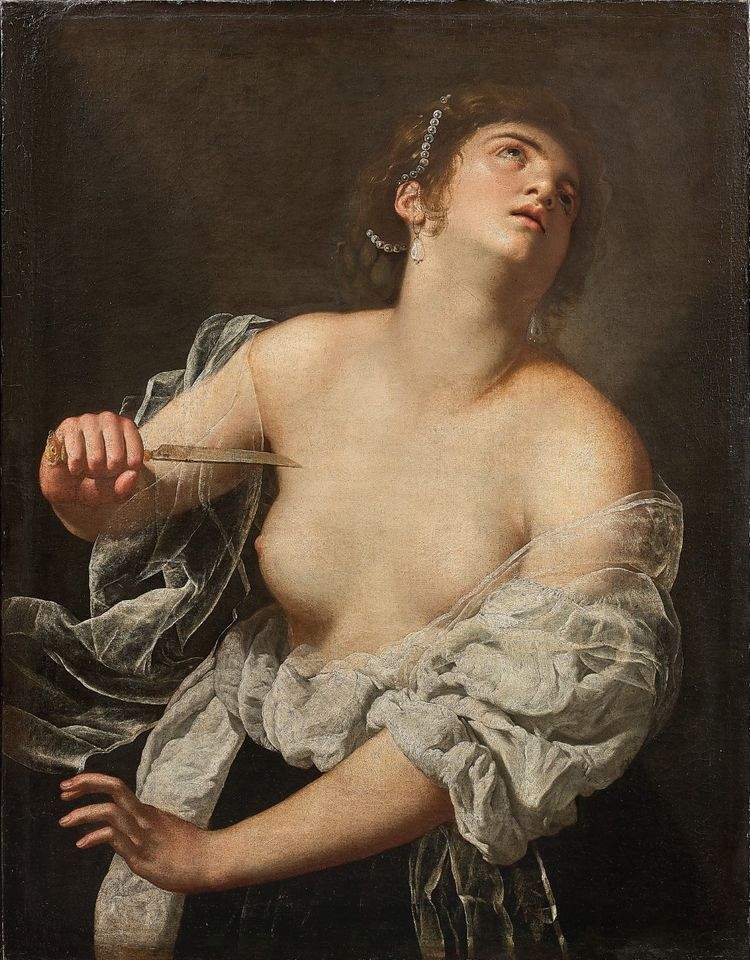A Lucrezia by Artemisia Gentileschi resurfaces in France. It will go up for auction in November
French auction house Artcurial has made it known that it has found a painting by Artemisia Gentileschi (Rome, 1593 - Naples, 1654), a Lucrezia that Artcurial itself says has been in a private collection in Lyon, France, for the past 40 years. The work would belong to the last phase of the artist’s career, namely his Neapolitan sojourn, and it would be a painting dating, to be precise, to the 1630s. The canvas will be sold at auction on November 13 with an estimate between 600 and 800 thousand euros. According to Artcurial’s Old Masters manager Matthieu Fournier, the painting would be in “perfect” condition, as he told The Art Newspaper.
However, this is not a new discovery: the painting was published in the catalog of an exhibition held at the Musée Rath in Geneva in 2004, which was titled Cléopâtre dans le miroir de l’art occidental. The Lucretia ’s record was edited by Professor Mauro Natale, who first summarized the events of the protagonist (Lucretia is a legendary Roman heroine: she was the wife of Collatinus and, according to the story, after being raped at the hands of Sextus, son of King Tarquinius the Superbus, she would take her own life rather than spend the rest of her existence disgraced) and then went on to examine her iconography. Lucretia is portrayed according to an iconographic type that was widespread in the seventeenth century: she is naked from the waist up, and is about to take her own life with a dagger, and in particular the heroine depicted by Artemisia Gentileschi, Mauro Natale wrote, is caught “in an attitude that expresses at once resignation, determination and fear.” This expressiveness “is sustained,” the scholar continued, “by a very sober palette and extraordinarily masterful work: the figure stands out from the gloomy background thanks to an amber light that strikes the young woman’s chest and arms. Here, the drawing of the figure is rendered through the juxtaposition of different color fields, following a pictorial procedure similar to that which characterizes Caravaggio’s Roman works.” However, Natale noted, unlike a Caravaggio who sought dramatic effect, here the chiaroscuro “softens the forms of the body and emphasizes its classical elegance, recalled by the opulent beauty of the shoulders and the gentle curve of the breasts.”
According to Natale, Lucretia fits into a tradition typical of Neapolitan painting of the time and shared by artists such as Massimo Stanzione, Bernardo Cavallino and Francesco Guarino, who favored half-length figures on a dark background. Lyon’s canvas, however, conforms only in part to the strong naturalism that characterized the production of the artists just mentioned: the restricted range of colors, the studied chiaroscuro, the virtuosity, the juxtaposition of compact and smooth chromatic surfaces with others that are instead fatter, “reveal,” the scholar pointed out, “a fascination for the works created by Simon Vouet in Rome.” And it is known that Artemisia looked to the French painter, especially from the 1930s onward. Moreover, the expressiveness of this Lucrezia would refer to other works executed during the 1930s. Finally, Natale asserted that affinities with works of the same period (including the Metropolitan’s celebrated Esther and Ahasuerus ) confirm the attribution and a date of 1630-1637.
We do not know for whom this Lucrezia was made, although we do know that Artemisia, while preferring large-format works in that period, also made smaller works: in the inventories of Davide Imperiale, a nobleman belonging to a Genoese family of which a branch had settled in Naples, a Lucrezia of similar size to the one in Lyon is mentioned (indeed: Natale suggested that it cannot be ruled out that the Lucrezia Imperiale and the one from Lyon are actually the same painting, since the ancient provenance of the work from a private French collection is unknown).
Pictured: Artemisia Gentileschi, Lucretia (1630-1637; oil on canvas, 97 x 76 cm; Private collection)
 |
| A Lucrezia by Artemisia Gentileschi resurfaces in France. It will go up for auction in November |
Warning: the translation into English of the original Italian article was created using automatic tools. We undertake to review all articles, but we do not guarantee the total absence of inaccuracies in the translation due to the program. You can find the original by clicking on the ITA button. If you find any mistake,please contact us.




























